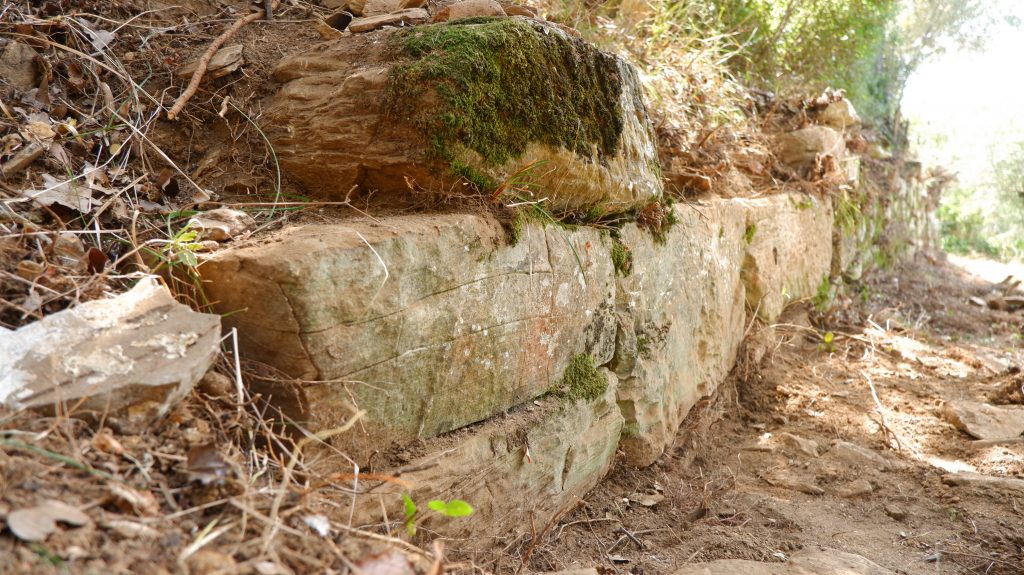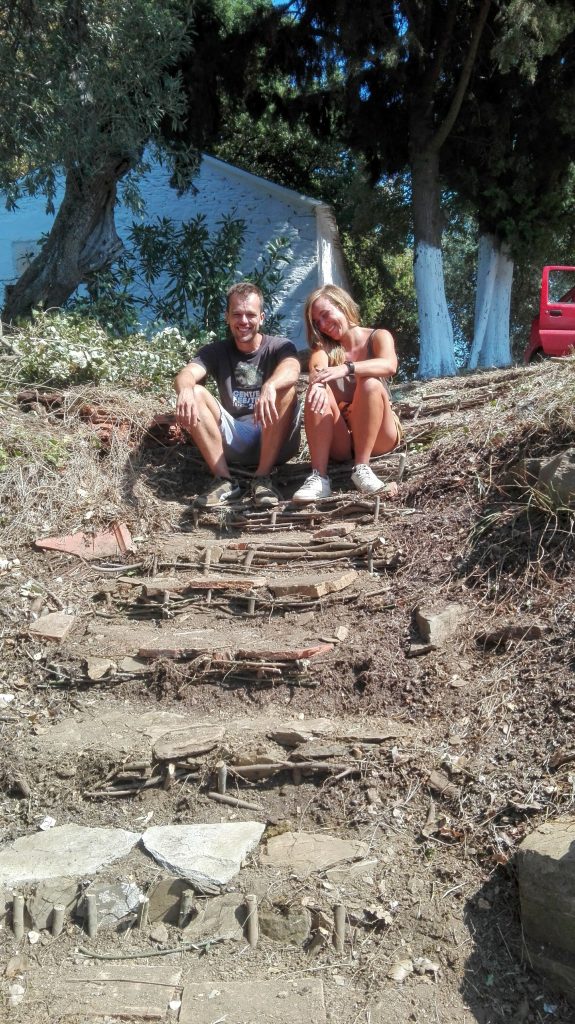It all began with Stafilos, who was probably a Cretan prince, sent to Skopelos by king Minos in the 16th century BC. He is believed to have been the son of Dionysos and Ariadni, brother to Oinopion, Thoas and Peparethos. Only Peparethos joined him in the colonisation of Skopelos and gave the island its name, which fell into disuse in the 2nd century AD. They brought with them vines and olive trees.
In 1936, contents of a rich grave were found by chance in the neck of the headland between the beaches now known as Stafilos and Valanio. They included a gold sword handle, the biggest ever to be found in Greece, plus many artefacts, including a double edged axe, the symbol of the Minoans. They can be found in the National Museum in Athens. It isn’t certain that the grave was that of Stafilos himself but it was undoubtedly that of royalty, as only a leader would have had such precious funeral offerings.
Believe it or not, there are the remains of a Mycenean wall at the end of Stafilos beach (1600-1100BC).
The remains of Roman defence walls can be found at Kastro (castle) Milos, *Panormos, Kanaka Laka and Loutraki (ancient Selinus). There’s also a very interesting looking wall next to the road to Moutero. It’s mentioned by archaeologist Diamantis Sampson, but no details documented. 
 Temples: Asclepius the demi-god, Artimis/Diana goddess of hunting (within the walls of private Episcope monastery), Eefastos/Vulcan god of fire and metal (Ag Konstantinos), Athene/Minerva, goddess of wisdom and war (Raches) to name but a few. Others existed, their remains having been recycled into the walls of the Christian churches that took their place.
Temples: Asclepius the demi-god, Artimis/Diana goddess of hunting (within the walls of private Episcope monastery), Eefastos/Vulcan god of fire and metal (Ag Konstantinos), Athene/Minerva, goddess of wisdom and war (Raches) to name but a few. Others existed, their remains having been recycled into the walls of the Christian churches that took their place.
Sarcophagi were also upcycled where possible and used in the building of Christian churches (eg. Ag Michalis Sinadon, *Panagia Eleftherotria). A complete sarcophagus is literally sticking out of the wall in the house of family Kosma. Even older are tombs honed into the rockface at Sendoukia, Aloupi, Alikias and Mavraki, Glossa.
*Roman Baths/Loutra at Katakalou, Loutraki.
A network of beacons/Phryctoria were built on hill-tops across the island, each visible to the next. A prearranged semaphore was used to convey messages. Ruins can be found at Mavrangi, Helenico, Cape Prionos, Mavraki, and Panormos. There must have been others in the Palouki area but none have been documented.







